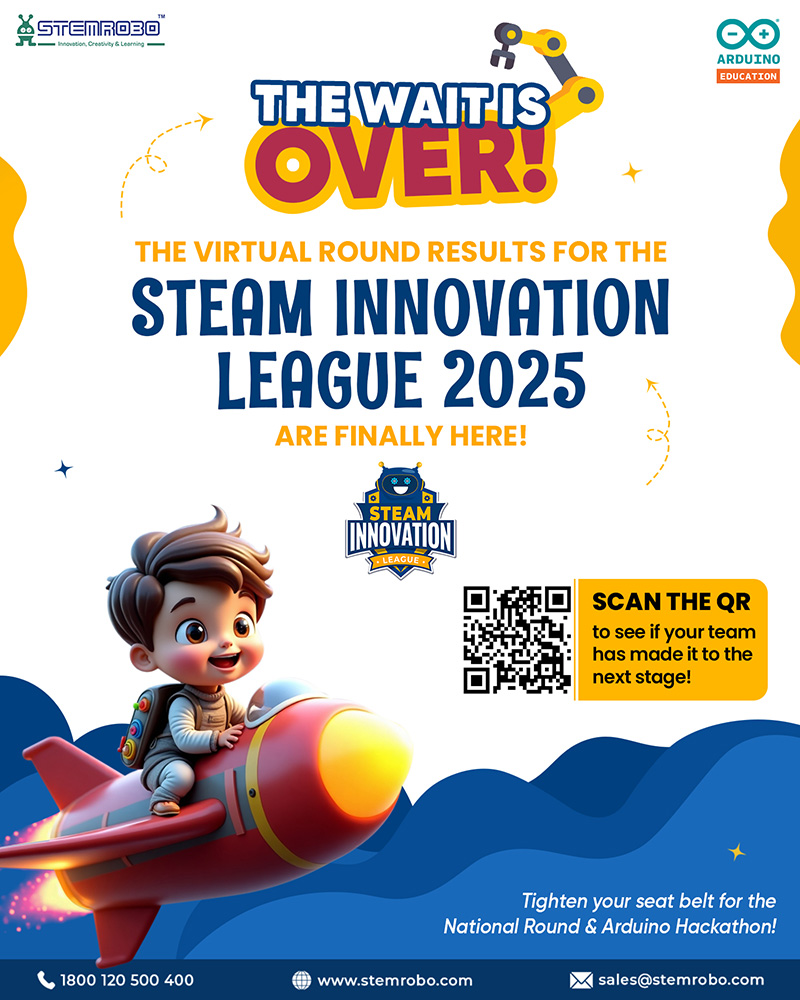In the dynamic landscape of education, the importance of Science, Technology, Engineering, and Mathematics (STEM) learning cannot be overstated. Recognizing this, educational institutions worldwide are seeking innovative ways to integrate STEM education into their curricula. This blog serves as a comprehensive guide for schools aiming to revolutionize STEM learning through the establishment of STEM labs .
STEM learning is an interdisciplinary approach that encourages students to explore real-world problems through the lens of science, technology, engineering, and mathematics. It goes beyond traditional silos, fostering a holistic understanding of these subjects and their interconnectedness. STEM education is not just about acquiring knowledge; it’s about developing critical thinking, problem-solving skills, and the ability to apply theoretical concepts to practical situations.
Importance of STEM Labs in Schools
STEM labs play a pivotal role in bringing STEM education to life. These dedicated spaces provide an immersive environment where students can engage in hands-on, experiential learning. Unlike conventional classrooms, STEM labs are equipped with specialized tools, resources, and technologies that enable students to apply theoretical knowledge in a practical, real-world context. The importance of STEM labs lies in their ability to bridge the gap between theory and application, creating a dynamic learning experience.
Key Components of a Successful STEM Lab
- Hands-On Learning Materials: A well-equipped STEM lab should include a variety of hands-on learning materials such as robotics kits, scientific instruments, engineering tools, and interactive technologies. These materials empower students to actively engage with STEM concepts, turning abstract theories into tangible projects.
- Flexibility and Collaboration Spaces: STEM learning thrives in an environment that promotes flexibility and collaboration. Designing the STEM lab with modular furniture, flexible layouts, and collaborative spaces ensures that students can work together seamlessly on projects, fostering teamwork and creativity.
- Technology Integration: Embracing technology is integral to modern STEM education. A successful STEM lab should be equipped with the latest technologies, including computers, tablets, interactive displays, and other digital tools. This integration enhances the learning experience, preparing students for the technology-driven world they will navigate in the future.
- Safety Measures: Safety is paramount in any learning environment. STEM labs should adhere to strict safety measures, providing students with a secure space to conduct experiments and projects. Safety equipment, guidelines, and trained supervisors contribute to creating a secure yet dynamic learning atmosphere.
- Project-Based Learning Initiatives: The essence of STEM education lies in project-based learning. STEM labs should facilitate project-based initiatives where students can identify problems, brainstorm solutions, and execute projects from start to finish. This approach not only reinforces theoretical concepts but also instills a sense of ownership and accomplishment.
Benefits of Implementing STEM Labs in Schools
- Enhanced Learning Outcomes: STEM labs promote active learning, leading to enhanced understanding and retention of STEM concepts. The hands-on approach allows students to see the practical applications of what they learn in the classroom, making the knowledge more tangible and relevant.
- Development of Critical Skills: STEM education focuses on developing critical skills such as problem-solving, critical thinking, creativity, and collaboration. Through STEM labs, students are not just memorizing information; they are actively engaging in the process of inquiry and discovery.
- Preparation for Future Careers: In today’s technology-driven world, STEM skills are highly sought after in the job market. Implementing STEM labs in schools prepares students for future careers in STEM-related fields, equipping them with the skills and mindset needed to navigate the challenges of the professional world.
- Inclusive Education: STEM labs provide an inclusive learning environment where students of diverse backgrounds and abilities can thrive. The hands-on nature of STEM education accommodates various learning styles, ensuring that every student has the opportunity to succeed.
Steps to Establish an Effective STEM Lab in Schools
- Assessment of Resources: Begin by assessing the available resources, space, and budget for establishing a STEM lab. Understand the specific needs and goals of the school, taking into consideration the number of students and the desired scope of STEM education.
- Curriculum Alignment: Align the STEM lab with the existing curriculum to ensure seamless integration with classroom learning. Identify key STEM concepts that complement the curriculum, creating a cohesive educational experience for students.
- Professional Development: Invest in professional development for educators to ensure they are well-equipped to facilitate STEM learning in the lab. Training programs, workshops, and collaborative learning opportunities contribute to the success of the STEM lab initiative.
- Community Engagement: Foster community engagement by involving parents, local businesses, and experts in STEM fields. Building a network of support enhances the resources available to the STEM lab and creates a collaborative learning ecosystem.
- Continuous Improvement: Establish a feedback loop and mechanisms for continuous improvement. Regularly assess the effectiveness of the STEM lab, gather feedback from students and educators, and make adjustments to optimize the learning experience.
Conclusion: Empowering Students for a Dynamic Future
The establishment of STEM labs in schools represents a transformative step toward empowering students for a dynamic future. These dedicated spaces provide the canvas for students to explore, experiment, and innovate, laying the foundation for a generation of critical thinkers, problem solvers, and lifelong learners. By embracing the principles outlined in this comprehensive guide, schools can embark on a journey to revolutionize STEM learning and prepare students for the challenges and opportunities of the 21st century.







